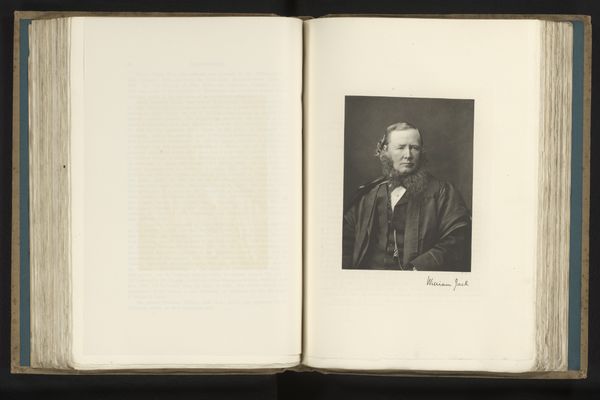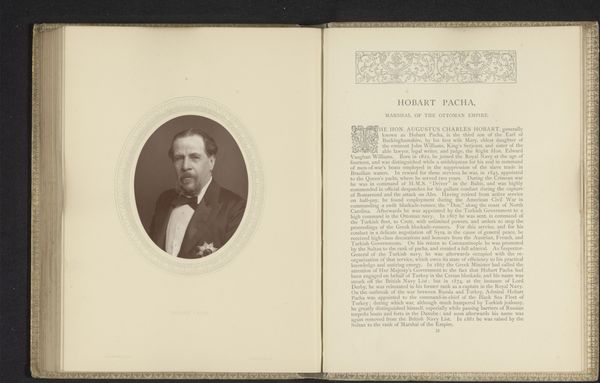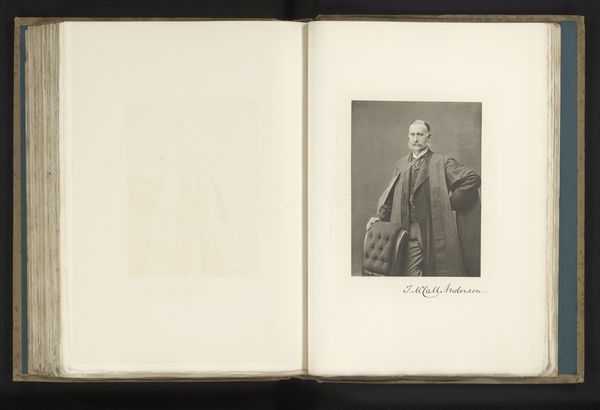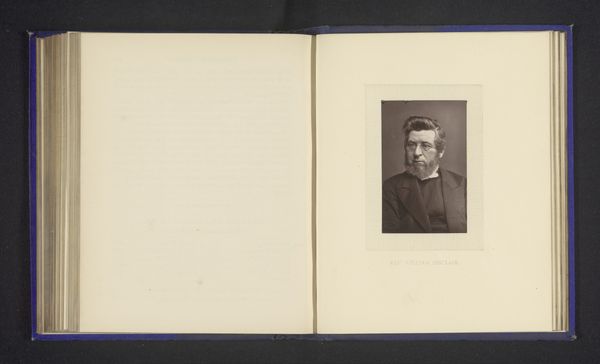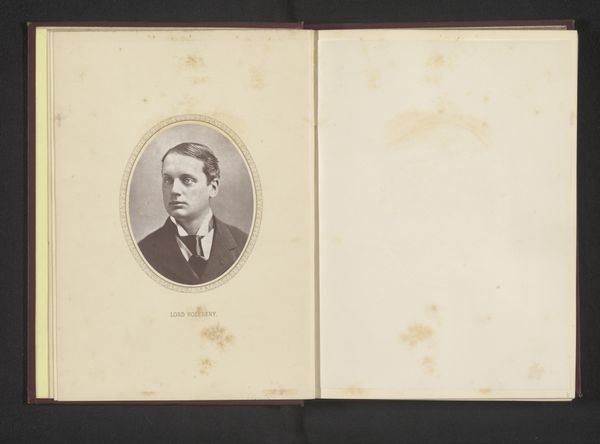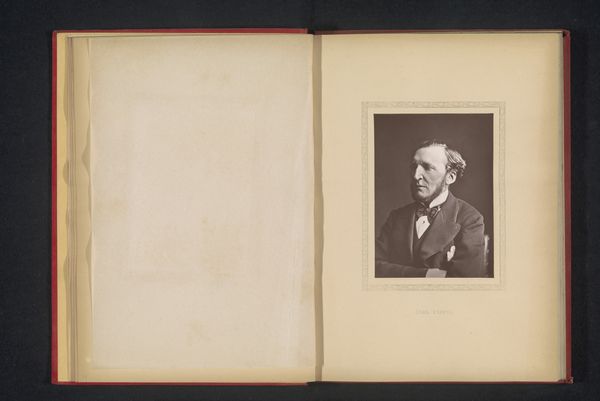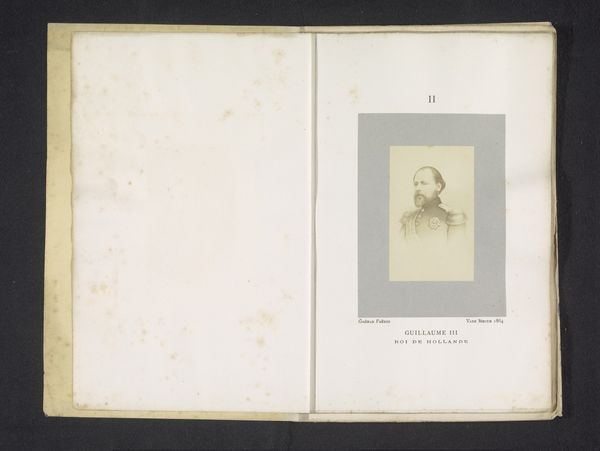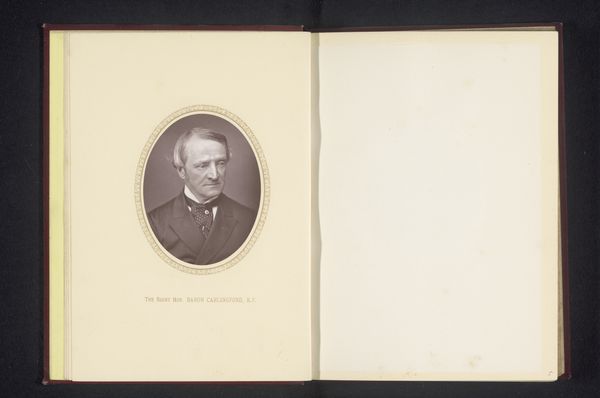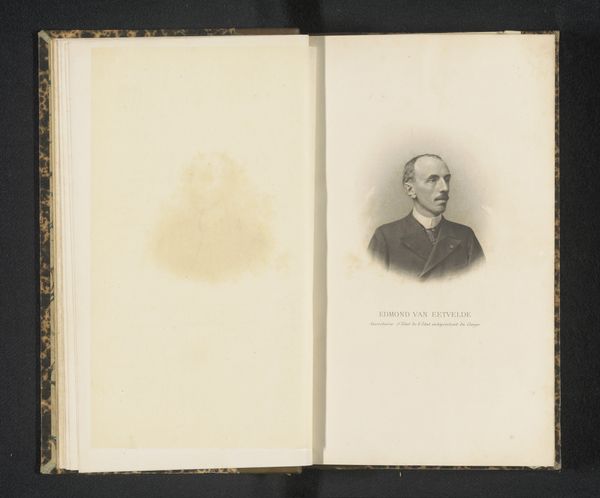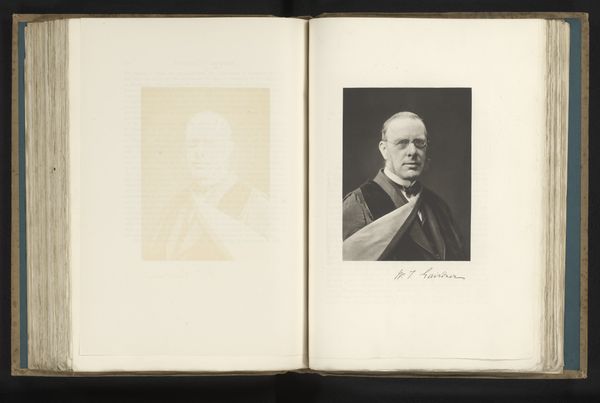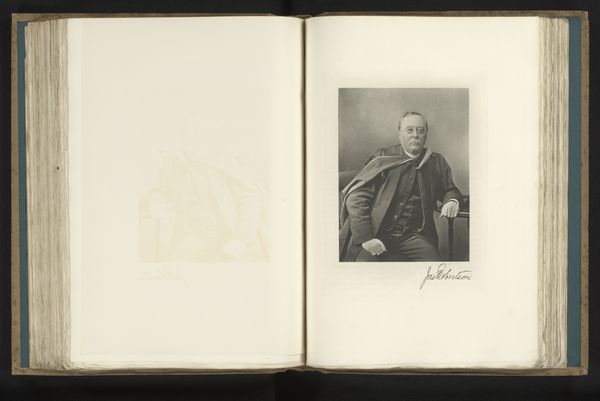
print, photography, albumen-print
#
portrait
# print
#
photography
#
history-painting
#
academic-art
#
albumen-print
Dimensions: height 115 mm, width 89 mm
Copyright: Rijks Museum: Open Domain
Curator: Here we have an albumen print by Lock & Whitfield, titled "Right hon. Lyon Playfair," dating from before 1877. What are your immediate impressions? Editor: It's… sepia. An oval portrait, stuck in a book, gazing forlornly into the empty page beside him. Makes me feel slightly melancholic, like he's waiting for a story to begin. Curator: Albumen prints like these were extremely popular for portraiture. The process involves coating paper with albumen from egg whites, then sensitizing it with silver nitrate. This gives it that characteristic warm tone and fine detail we see here. Think about the scale of the process, the mass production... how photography democratized portraiture in a way previously unimaginable. Editor: Democratized… that’s an interesting point. Because to me it still feels incredibly formal, almost austere. The framing within an oval, the elaborate decorative border, even Playfair’s somewhat stern expression all speak to a certain level of...stuffy Victorian propriety? Curator: Indeed. These portraits, distributed as prints or collected in albums, functioned as social currency. They helped solidify status and project an image of respectability and adherence to societal norms. Consider the labor involved – not only of the photographers but the armies of workers producing paper and chemicals. The image itself is merely the surface. Editor: And what about Playfair himself? He looks terribly serious; I wonder what he was really like. What were his anxieties, his hopes… I almost want to reach into the photograph and smudge it, crack that polished veneer, to find something…real? Curator: That’s a very romantic notion, but it also speaks to photography’s inherent ambiguity. What we see here is a carefully constructed performance of identity. Look closely at the material quality of the print itself, the way the albumen reflects the light. That physicality grounds us in a specific time and place. Editor: You bring me down to earth! Okay, I appreciate that—I get lost in imagining a world and ignore the literal weight of history in my hands. Curator: These prints aren't just historical documents. They're material objects, artifacts of a particular industrial and social order. Editor: Thanks; next time I feel like falling down a rabbit hole, I’ll hold tight to the material. Curator: Precisely! And maybe ponder the socioeconomic implications of early photographic portraiture as you do so.
Comments
No comments
Be the first to comment and join the conversation on the ultimate creative platform.
